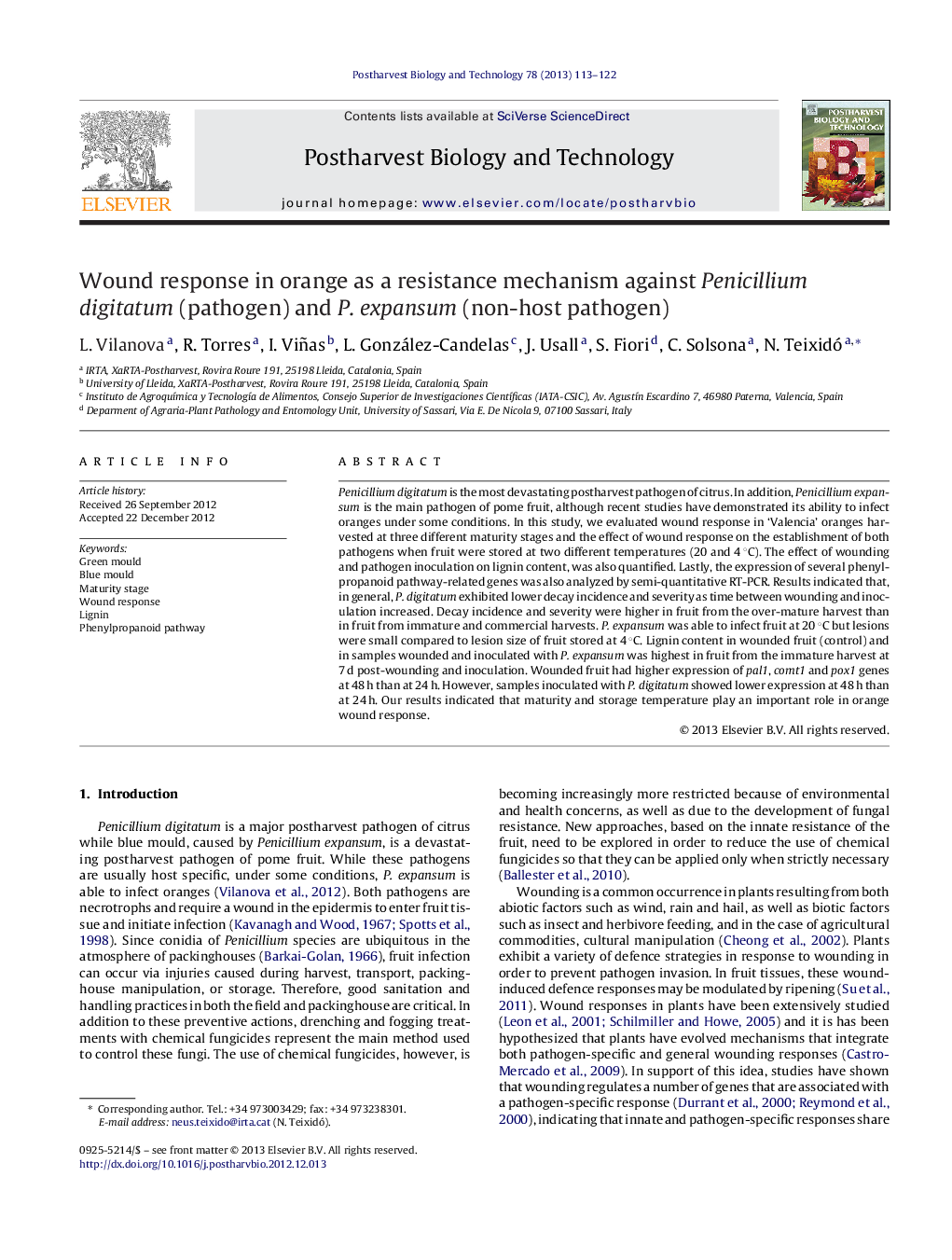| Article ID | Journal | Published Year | Pages | File Type |
|---|---|---|---|---|
| 4518491 | Postharvest Biology and Technology | 2013 | 10 Pages |
Penicillium digitatum is the most devastating postharvest pathogen of citrus. In addition, Penicillium expansum is the main pathogen of pome fruit, although recent studies have demonstrated its ability to infect oranges under some conditions. In this study, we evaluated wound response in ‘Valencia’ oranges harvested at three different maturity stages and the effect of wound response on the establishment of both pathogens when fruit were stored at two different temperatures (20 and 4 °C). The effect of wounding and pathogen inoculation on lignin content, was also quantified. Lastly, the expression of several phenylpropanoid pathway-related genes was also analyzed by semi-quantitative RT-PCR. Results indicated that, in general, P. digitatum exhibited lower decay incidence and severity as time between wounding and inoculation increased. Decay incidence and severity were higher in fruit from the over-mature harvest than in fruit from immature and commercial harvests. P. expansum was able to infect fruit at 20 °C but lesions were small compared to lesion size of fruit stored at 4 °C. Lignin content in wounded fruit (control) and in samples wounded and inoculated with P. expansum was highest in fruit from the immature harvest at 7 d post-wounding and inoculation. Wounded fruit had higher expression of pal1, comt1 and pox1 genes at 48 h than at 24 h. However, samples inoculated with P. digitatum showed lower expression at 48 h than at 24 h. Our results indicated that maturity and storage temperature play an important role in orange wound response.
► Wound response is an important factor in the resistance of oranges to P. digitatum and P. expansum. ► At 4 °C wound response in oranges was slower than at 20 °C. ► Lignin formation seems to be involved in orange wound response. ► Immature fruit were more resistant than commercial and over-mature fruit. ► P. digitatum can suppress the expression of several genes involved in the phenylpropanoid pathway.
